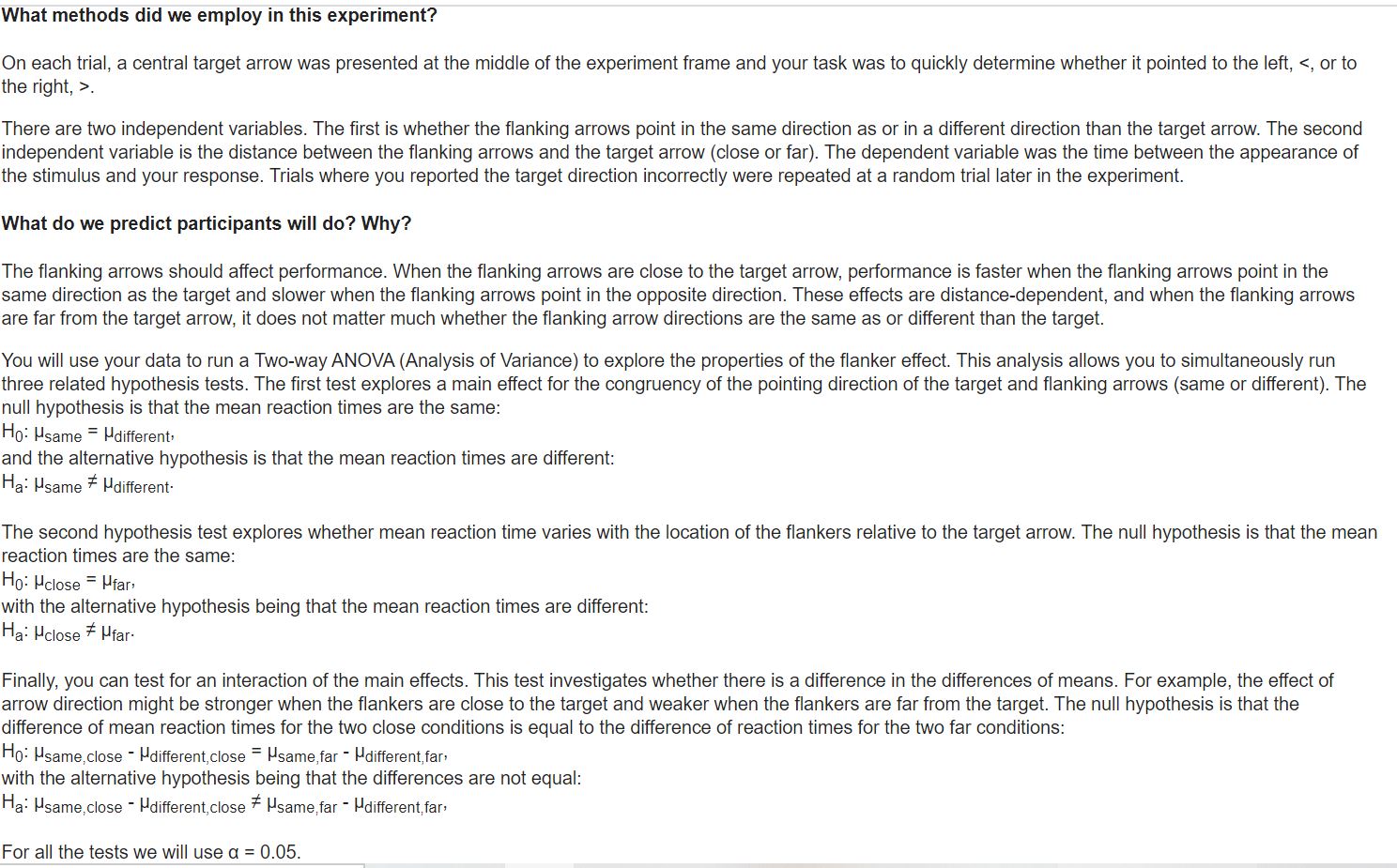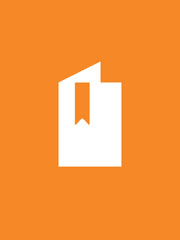Double click on the attachments to see the questions I am working on for practice and the instructions. I have some doubts and would like to learn the right process. Thank you Please see additional information on the notes section.
What methods did we employ in this experiment? On each trial, a central target arrow was presented at the middle of the experiment frame and your task was to quickly determine whether it pointed to the left, . There are two independent variables. The rst is whether the anking arrows point in the same direction as or in a different direction than the target arrow. The second independent variable is the distance between the anking arrows and the target arrow {close or far). The dependent variable was the time between the appearance of the stimulus and your response. Trials where you reported the target direction incorrectly were repeated at a random trial later in the experiment. What do we predict participants will do? Why? The flanking arrows should affect performance. When the anking arrows are close to the target arrow, performance is faster when the flanking arrows point in the same direction as the target and slower when the anking arrows point in the opposite direction. These effects are distance-dependent, and when the anking arrows are far from the target arrow, it does not matter much whether the anking arrow directions are the same as or different than the target. You will use your data to run a Two-way ANOVA (Analysis of Variance} to explore the properties of the flanker effect. This analysis allows you to simultaneously run three related hypothesis tests. The rst test explores a main effect for the congruency of the pointing direction of the target and anking arrows (same or different). The null hypothesis is that the mean reaction times are the same: H0: \"same = \"different- and the altemative hypothesis is that the mean reaction times are different: Ha: \"same i \"different- The second hypothesis test explores whether mean reaction time varies with the location of the ankers relative to the target arrow. The null hypothesis is that the mean reaction times are the same: H03 \"close = l-Ifar: with the alternative hypothesis being that the mean reaction times are different: Ha: \"close # \"far- Finally, you can test for an interaction of the main effects. This test investigates whether there is a difference in the differences of means. For example, the effect of arrow direction might be stronger when the ankers are close to the target and weaker when the ankers are far from the target. The null hypothesis is that the difference of mean reaction times for the two close conditions is equal to the difference of reaction times for the two far conditions: H03 \"same,clcse ' \"differentclose = \"samejar ' \"differentfarv with the alternative hypothesis being that the differences are not equal: Ha: \"same,clcse ' \"differentclose \"samefar ' \"differentfar: For all the tests we will use cr = 0.05. Questions Use the trial-bytrial data to answer these questions. Question Answer Mean RT for center and anking arrows being Same, and the flankers being Far: (The difference between your answer and the correct value must be less-than 0.01.) :1 ' :l Mean RT for center and anking arrows being Different, and the ankers being Far: :I (The difference between your answer and the correct value must be less than 0.01.) :l p-value for relative direction of center and anking arrows (rows): I I :I (The difference between your answer and the correct value must be lees than 0.001 .)_ Fratio for anker location (columns): (The difference between your answer and the correct value must be less than 0.01.) l lu for interaction: (The difference between your answer and the correct value must be less than 0.001.) :I _l Do you reject the null hypothesis for flanker location








